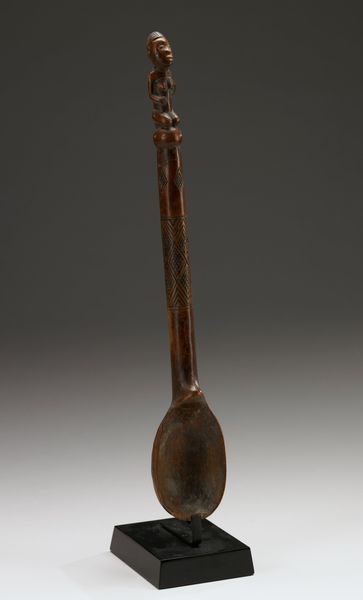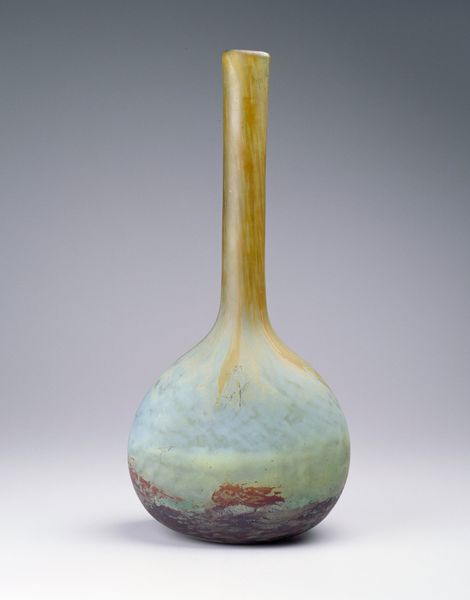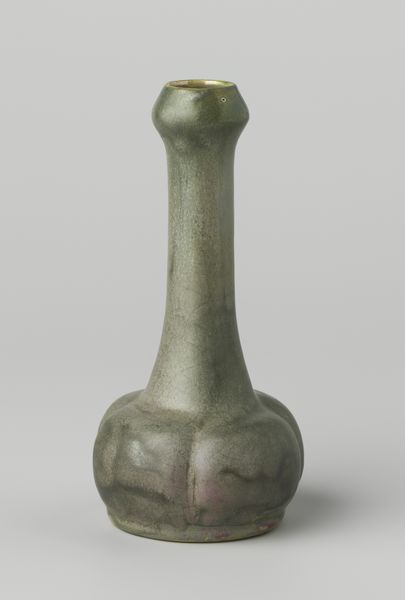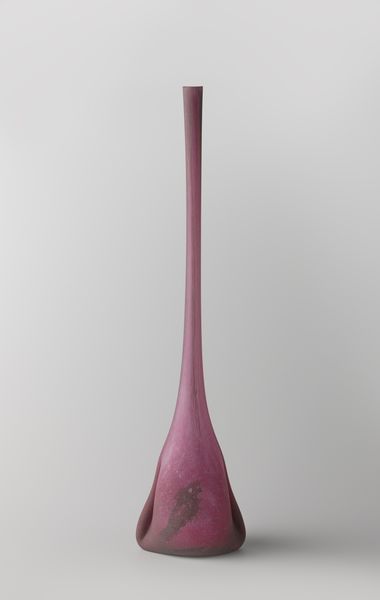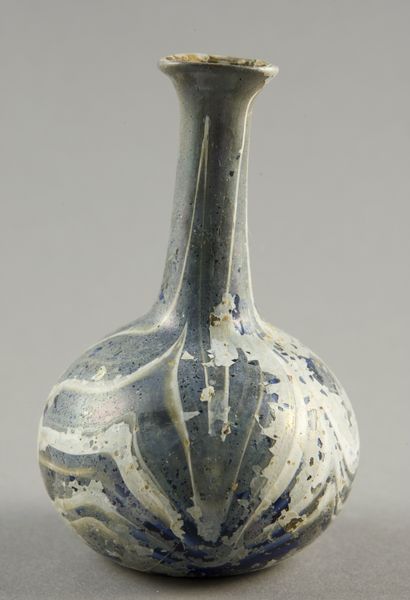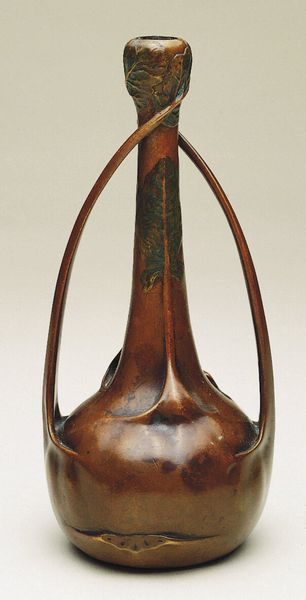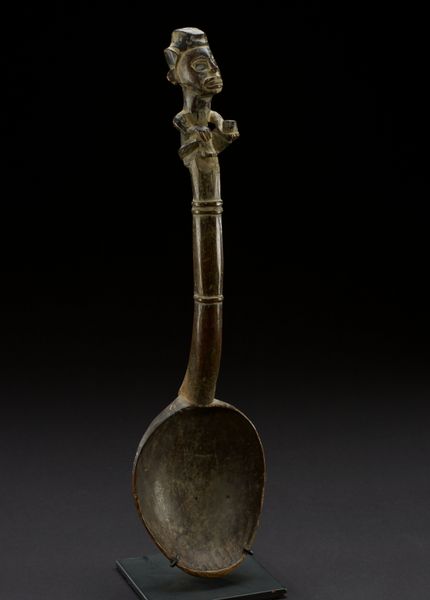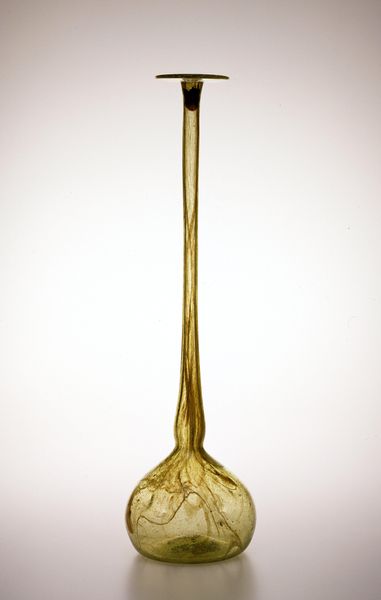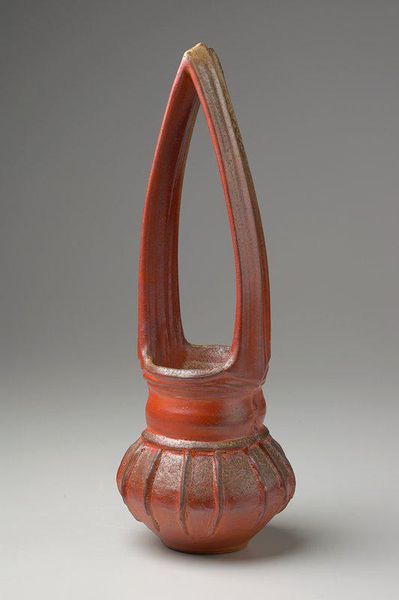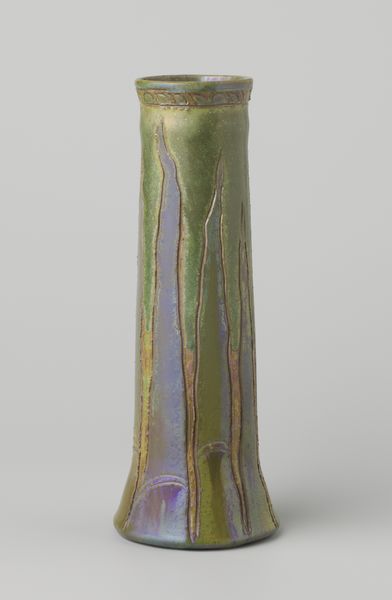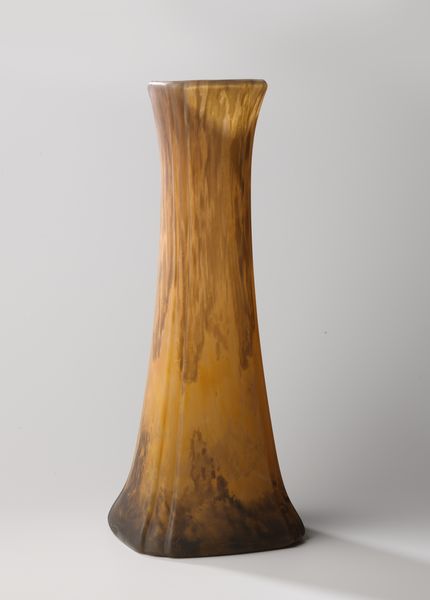
glass, sculpture
#
organic
#
art-nouveau
#
form
#
glass
#
sculpture
#
ceramic
#
decorative-art
Dimensions: 20 in., 2.2 lb. (50.8 cm, 1005g)
Copyright: Public Domain
Curator: Standing before us is the "Clutha Vase," crafted between 1890 and 1900 by Christopher Dresser. It’s an example of the stunning glasswork that emerged during the Art Nouveau period. Editor: It has this eerie, otherworldly aura about it, almost like it's been pulled straight from the depths of a murky lake. The translucent green glass gives it an ethereal quality. Curator: Indeed. And it's precisely that aqueous association that Dresser, a pioneer of industrial design, sought to invoke. The Clutha glass, named after the River Clyde in Scotland, aimed to capture the river's essence through its organic forms and mottled coloration. It represented his interest in bridging industrial production and nature. The tension in his role as artistic director is a dialogue that persists to this day. Editor: I see that now. There is a definite mimicry of organic form – a long, slender stem rising from a bulbous base, suggestive of aquatic plant life. Dresser understood that visual symbols carried weight; the Clutha river glass would symbolize Scotland, Scottish industrial strength and the flow of artistic ideas. Curator: I think it speaks to something even larger - the desire for harmonious coexistence. A complex ideal, of course, considering the colonial realities interwoven with Victorian industry and design. In what ways might Dresser, intentionally or unintentionally, be echoing those imbalances? His other designs certainly indicate a more complicated approach to Japonisme than his peers. Editor: Ah, I see what you’re suggesting – considering this vase as more than just a beautiful object. Perhaps there’s a subtextual commentary here on industrial society’s complicated relationship with nature and other nations. In visual symbology, glass means fragility and beauty but also, more sinister, surveillance and control. Dresser’s inclusion of imperfections - the bubbles and textures that evoke nature- may attempt to counteract industrial connotations. Curator: Right. I think it encourages a deeper consideration of our contemporary ecological discourse. Are we able to foster a truly respectful dialogue between industry, design, and environment? Editor: This vase feels less like an artifact and more like a poignant, ongoing question. It definitely lingers in the mind!
Comments
No comments
Be the first to comment and join the conversation on the ultimate creative platform.

